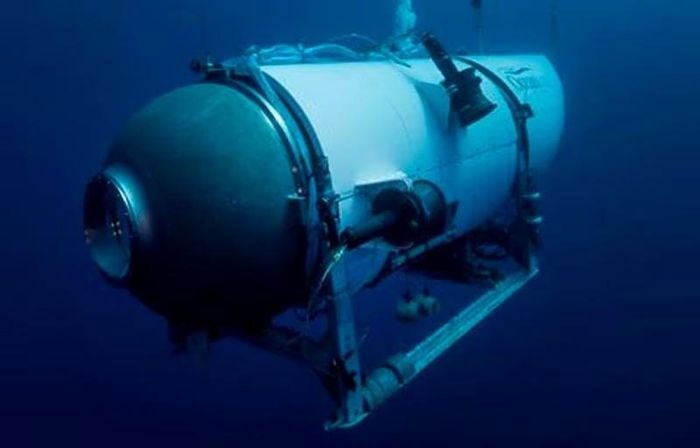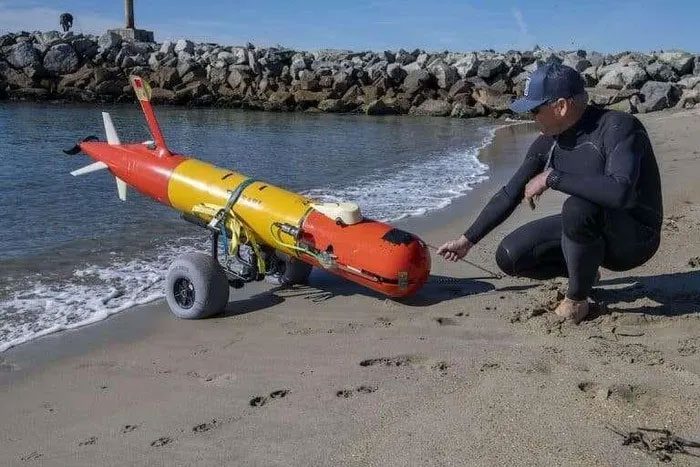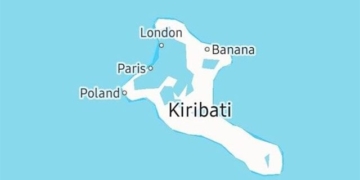Descending to the depths of the ocean is inherently dangerous.
Therefore, exploration missions often utilize autonomous vehicles to gather data.
Choosing Multiple Dangers

The Titan submersible disaster once again highlights the dangers of ocean exploration.
Rescue teams discovered debris from the Titan submersible on the ocean floor near the wreck of the Titanic on June 22. The Titan is believed to have encountered a catastrophic failure, resulting in the deaths of all five people on board.
The disappearance of the Titan submersible has sparked controversy due to its non-compliance with regulations and safety standards. The tour operator claimed that the technology was still too new and had not been properly evaluated.
Previously, in 2018, David Lochridge, the former Director of Marine Operations at OceanGate, wrote a technical report noting that the type of submersible developed by the company required more testing time. Passengers could be in danger when the submersible reached “excessive depths.”
Meanwhile, Sal Mercogliano, a professor at Campbell University (USA) and a maritime historian, affirmed that the Titan submersible did not need to comply with safety regulations, as it operated in international waters.
Mechanical engineer Nina Mahmoudian from Purdue University (USA) noted that taking humans to the ocean’s depths is inherently very dangerous.
At the same time, climate change makes it more important than ever to gather data from the world’s oceans. Nina Mahmoudian explained how researchers minimize risks and costs associated with ocean exploration. This involves sending submersibles down while keeping humans on the surface.
Engineer Mahmoudian stated: “When we talk about water research, we are referring to vast areas. Covering large areas requires tools that can operate for extended periods, sometimes for months. Sending people down in underwater vehicles, especially for such long durations, is extremely costly and dangerous.”
One of the tools researchers use is the remotely operated vehicle (ROV). Basically, there is a cable between the vehicle and the operator. This allows the operator to command and maneuver the vehicle.
Simultaneously, the vehicle can transmit real-time data. ROV technology has advanced significantly, enabling access to ocean depths of up to 6,000 meters. It also provides the necessary mobility to observe the seabed and collect better data.
Autonomous underwater vehicles offer another opportunity for exploration. These vehicles are often pre-programmed to perform specific tasks. While underwater, they typically do not communicate frequently.
At certain intervals, they surface, transmitting all the data collected, changing batteries, or recharging. Afterward, they receive new instructions before diving again to continue their mission.
“However, manned submersibles are very appealing to the public and stakeholders. This type of vehicle is also beneficial for the increasing capabilities that humans bring to operate tools and make decisions, similar to manned space exploration.
However, it will be much more expensive than unmanned explorations. Today, manned submersibles can cost tens of thousands of USD per day to operate,” engineer Nina Mahmoudian stated.
Safe and Cost-Effective Tools

Autonomous exploration vehicles are often used underwater.
According to engineer Nina Mahmoudian, the use of unmanned systems provides better opportunities for exploration, with lower costs and risks when operating in vast areas and harsh locations. Utilizing remote-operated and autonomous underwater vehicles allows operators to conduct missions that would be hazardous for humans, including observing under ice and detecting underwater mines.
Deep ocean research technology has advanced significantly in recent years due to improvements in sensors and computing. There have been substantial advances in miniaturizing acoustic and sonar sensors for underwater use. Computers have also become smaller, more capable, and energy-efficient. A great deal of research has been conducted on battery technology and watertight connectors.
Additive manufacturing and 3D printing have also facilitated the production of hulls and components that can withstand high pressure at depth at much lower costs. The world has also seen significant advancements in enhancing autonomy by using more advanced algorithms, in addition to traditional navigation and detection methods. For instance, machine learning algorithms can assist vehicles in detecting and classifying objects, whether stationary like pipelines or mobile like schools of fish.
Underwater submersibles are one of the remotely operated and autonomous vehicles designed to help explore the ocean. These are self-driving underwater vehicles that can remain submerged for months.
Simultaneously, they can collect data on pressure, temperature, and salinity while moving up and down in the water. All of this is extremely useful for researchers to understand the changes occurring beneath the ocean.
In 2019, researchers used an autonomous underwater vehicle to collect data about the seabed beneath the Thwaites Glacier in Antarctica.
Energy companies are also employing remotely operated and autonomous underwater vehicles to inspect and monitor offshore renewable energy as well as oil and gas infrastructure on the seabed.
According to engineer Nina Mahmoudian, underwater systems are a foundation for slow movement. If researchers can deploy them in large numbers, it would provide an advantage in covering vast areas of the ocean.
One of the underwater submersibles traversed the North Atlantic from the coast of Massachusetts to Ireland for nearly a year, from 2016 to 2017. The amount of data collected during that time was unprecedented. Every eight hours, the submersible would surface. The crew essentially planned the next leg of the mission. If a manned vessel were sent to collect that amount of data over such a long period, the costs would reach tens of millions of USD.





















































